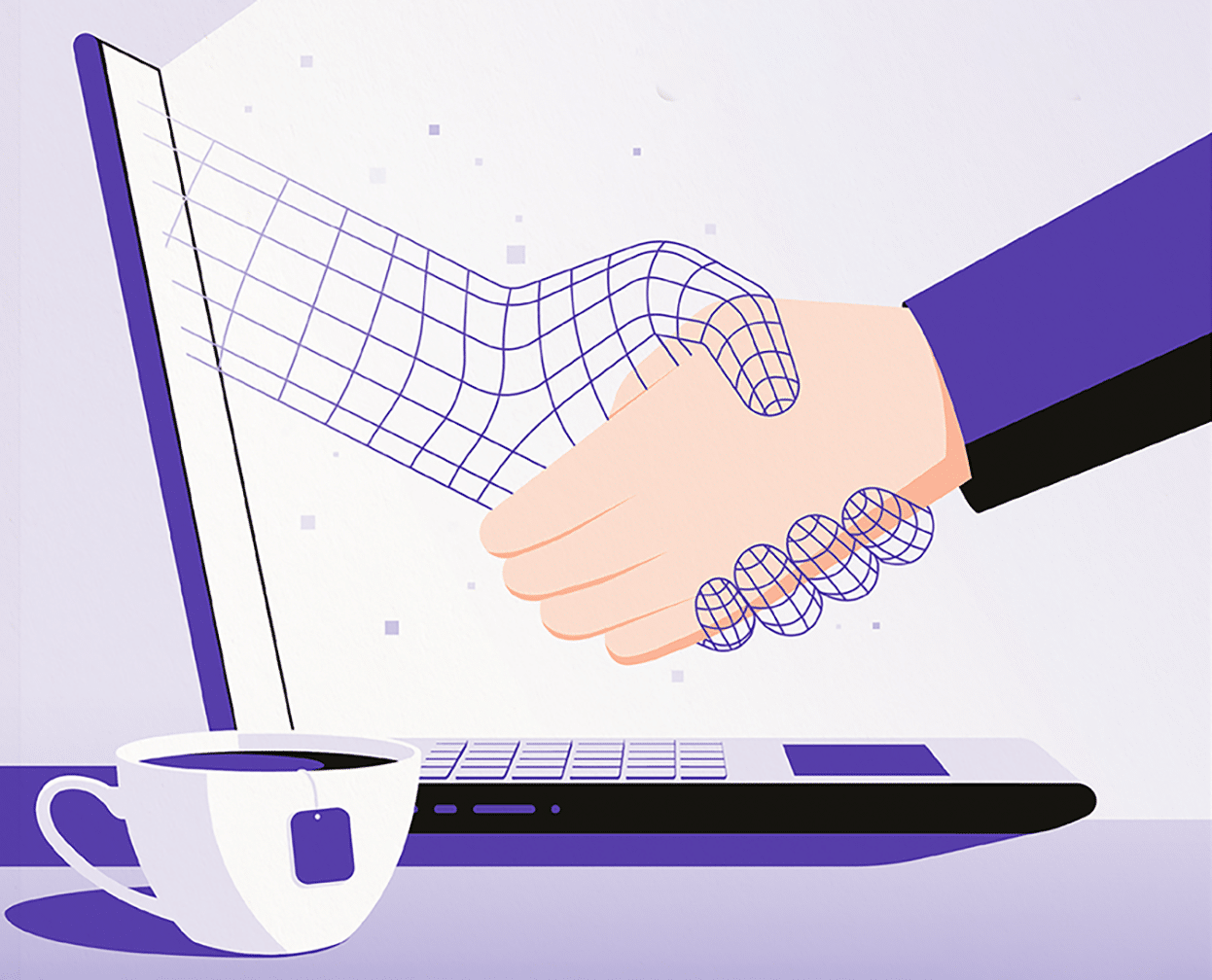Why Using AI in Art Briefs Can Stifle Creativity
Published on 24/02/2025Illustration by Beth Goody.
By: Edward Burns CEO, ITSme
AI art tools such as Midjourney or Flux are becoming more and more capable, and that fact is impossible to ignore. With these developments, it can be tempting to use AI-generated art as reference material when briefing a project. While AI has its uses, we at the ITSme Group feel that using AI-generated art in art briefs can stifle creativity more than encourage it. This can result in narrower, shallower, less original deliverables. We believe that the strength of human creativity and interpretation far outperforms anything an AI could inspire.
We know that you respect the work of artists as authentic creators, and it may seem like providing precise AI art as references can only make an artist’s life easier. The problem is that AI art is merely a literal interpretation of prompts and keywords. The product may look pleasing, but it’s often surface-deep and tends to provide little in the way of inspiration. In fact, it can confuse the message for the artist more than clarify it. An artist may be prompted to try to imitate that art – even when their own interpretation might be brighter, better, and far more appealing.
We all know that art is subjective. We rely on that subjectivity – the artist’s experiences and feel for the market, their human empathy and imagination – to generate art that resonates with audiences and give us something totally unique.
We’ve seen this before: If you brief two artists with the same AI reference art, you’re likely to get two slightly different versions of the same thing. If you allow two artists to interpret the brief and deliver art in their own authentic brands, you’re likely to get two vastly different products that equally meet, or even surpass, your expectations – products that human buyers are drawn to. It is the depth of human experience that makes a piece of art appeal.
It’s also true that client and artist relationships go both ways. AI art can make a professional illustrator feel unappreciated and undermined, even just as example art. And worse, if a client gets attached to aspects of the AI art, there can only be disappointment on both sides.
For these reasons, the ITSme Group encourages clients to stick to more traditional methods of briefing, and avoid the temptation of including AI-generated artwork. We trust that our artists know how to interpret your needs.
For more free tips for how to improve your creative skills, subscribe to our ITSme Learning Newsletter! Or take a look at our courses here.
Other News
What Happens in an ITSme Mentorship? A Week-by-Week Breakdown
Imagine having a guide who not only understands the creative path an individual wants to walk, but also has the knowledge and tools to help them get there – successfully. That’s the core of the ITSme Learning Mentorship. Whether someone is a student, a young professional at the beginning of their career, or an artist…
Announcing Our Very First Picture Book Course!
We are extremely excited to announce our first picture book class and mentorship program, in a collaboration between Caroline Wakeman Literary Agency and multi-talented author-illustrator Sally Anne Garland. Your Picture Book Journey: How to Write and Illustrate Your Own Picture Book is a 12-week course for writers, illustrators, and visual storytellers ready to bring their…
Why Every Illustrator Portfolio Needs a Stand-Out Character (Yes, Even Yours)
When you’re thinking about our favourite stories as a child, we often think about the narrative, the themes, perhaps a particular quote that stood out, but the most memorable elements are always the characters. The reason the characters always stay in our minds is because they are the gateway to the narrative, and all of…
Trend Watch: YA Illustrated Covers
Over the past few years, illustrated covers have become a defining visual language in the Young Adult (YA) and New Adult (NA) book market. And no, this isn’t just a passing trend—it’s a design evolution powered by the viral force of #BookTok, #bookgirlies, and a growing appetite for genre-fluid storytelling. Hear what’s driving the…
Trend Watch: The Graphic Novel Boom
Every week we’ll be featuring a new article over on LinkedIn, in our new trend watch series! Graphic novels are having a moment—and it’s no passing trend. From classrooms to bestseller lists, graphic novels are dominating shelves and reading time across all ages. What was once seen as a niche format with a distinct, heavy-lined “comic book”…
Bologna 2025: A Week of Connection
By: Vicky Patoulioti, Talent Source Manager, ITSme This year’s Bologna Children’s Book Fair was one to remember. From early mornings to late evenings, our team Vicky, Bhavi, Ed, and Emily — were on the ground offering free portfolio reviews to artists from all over the world. Mornings kicked off with pre-scheduled reviews, while in the…




